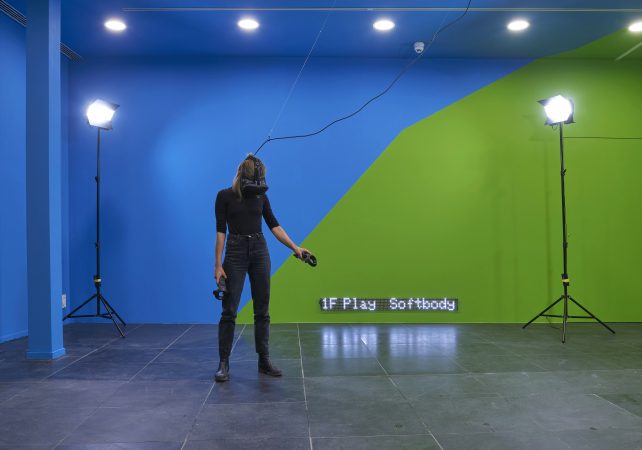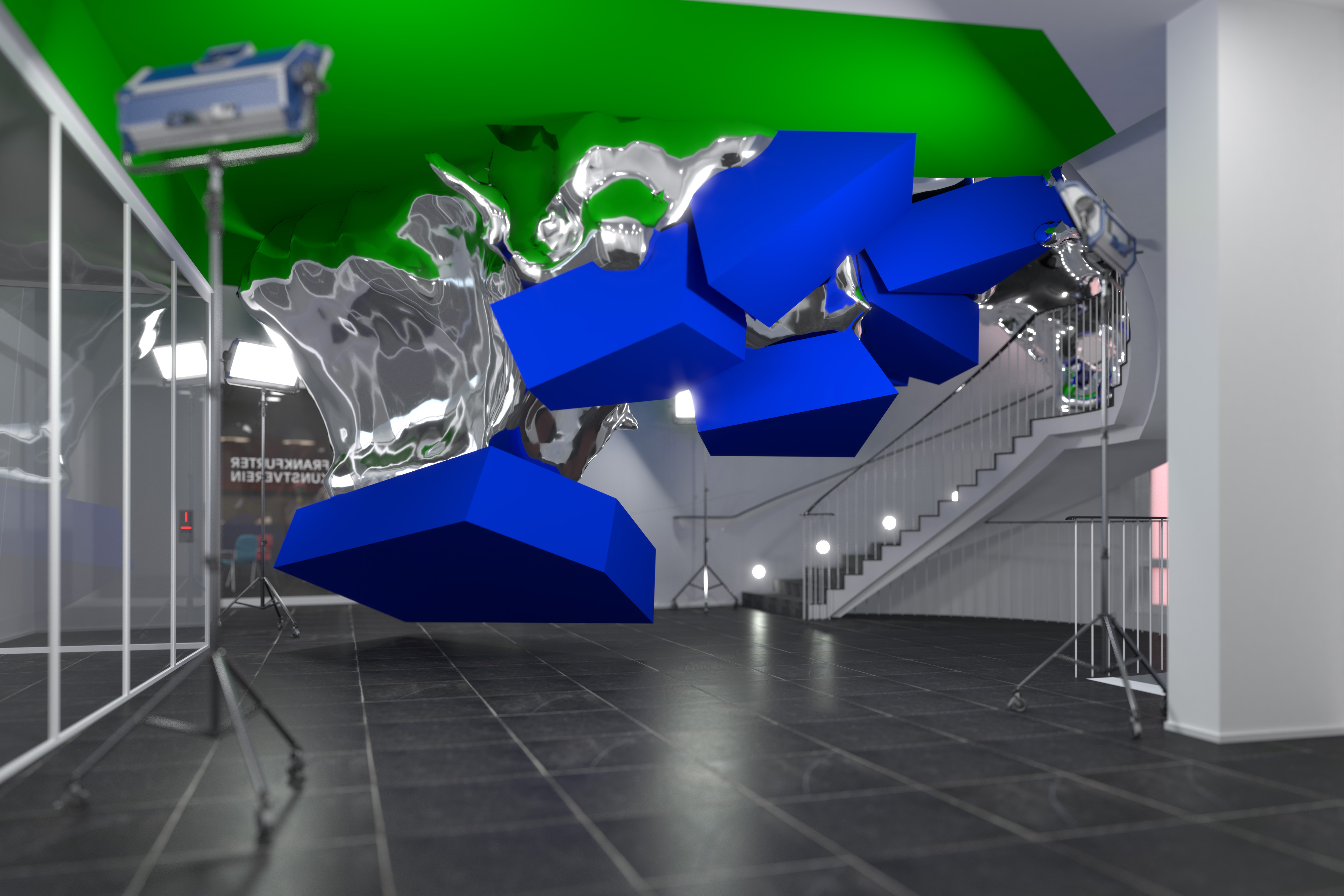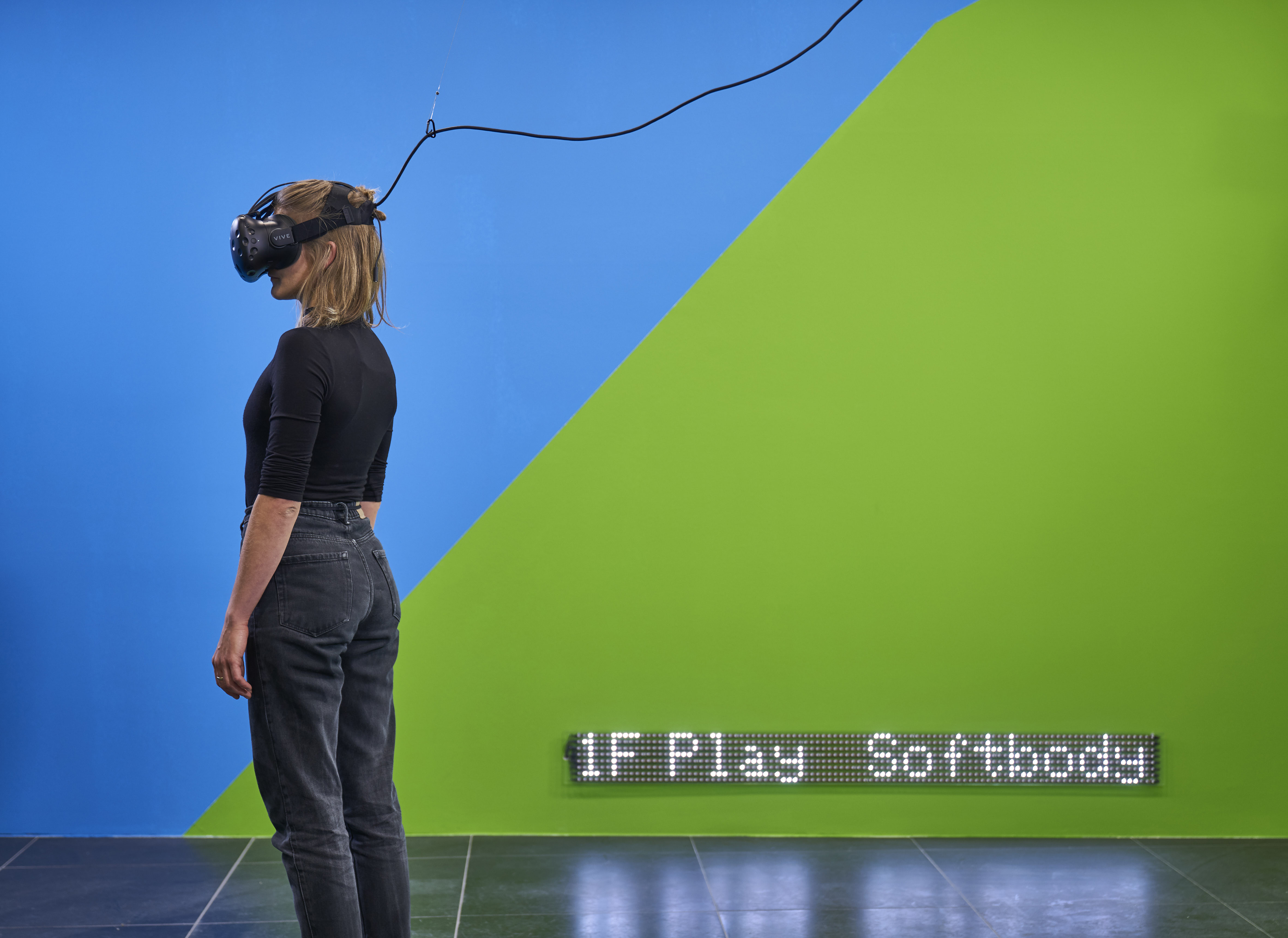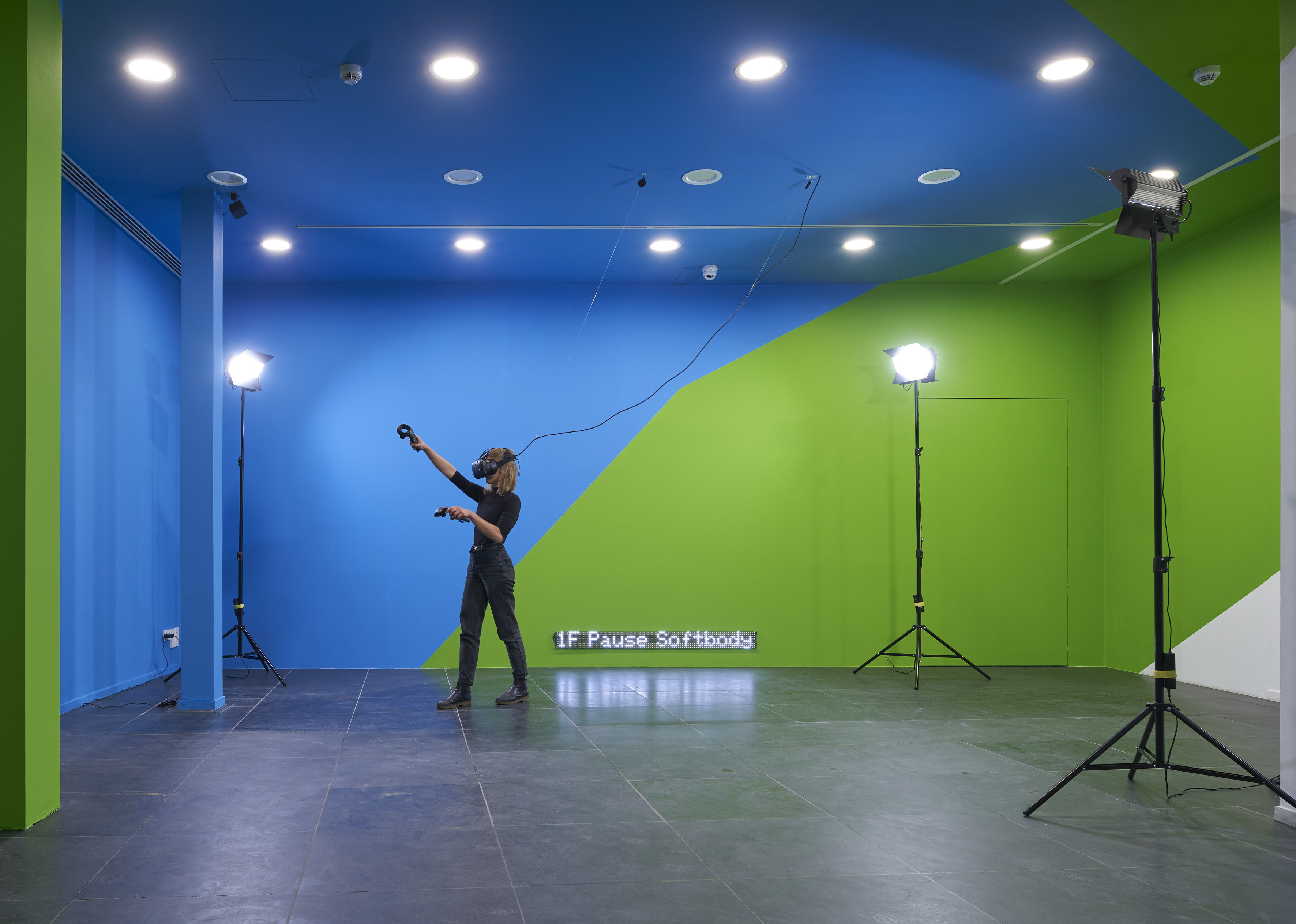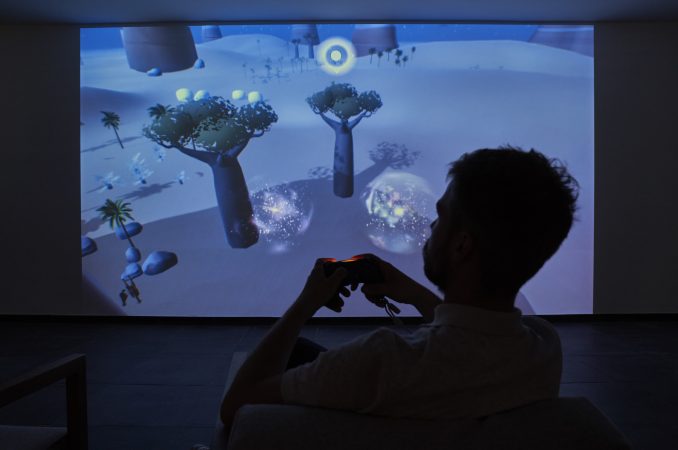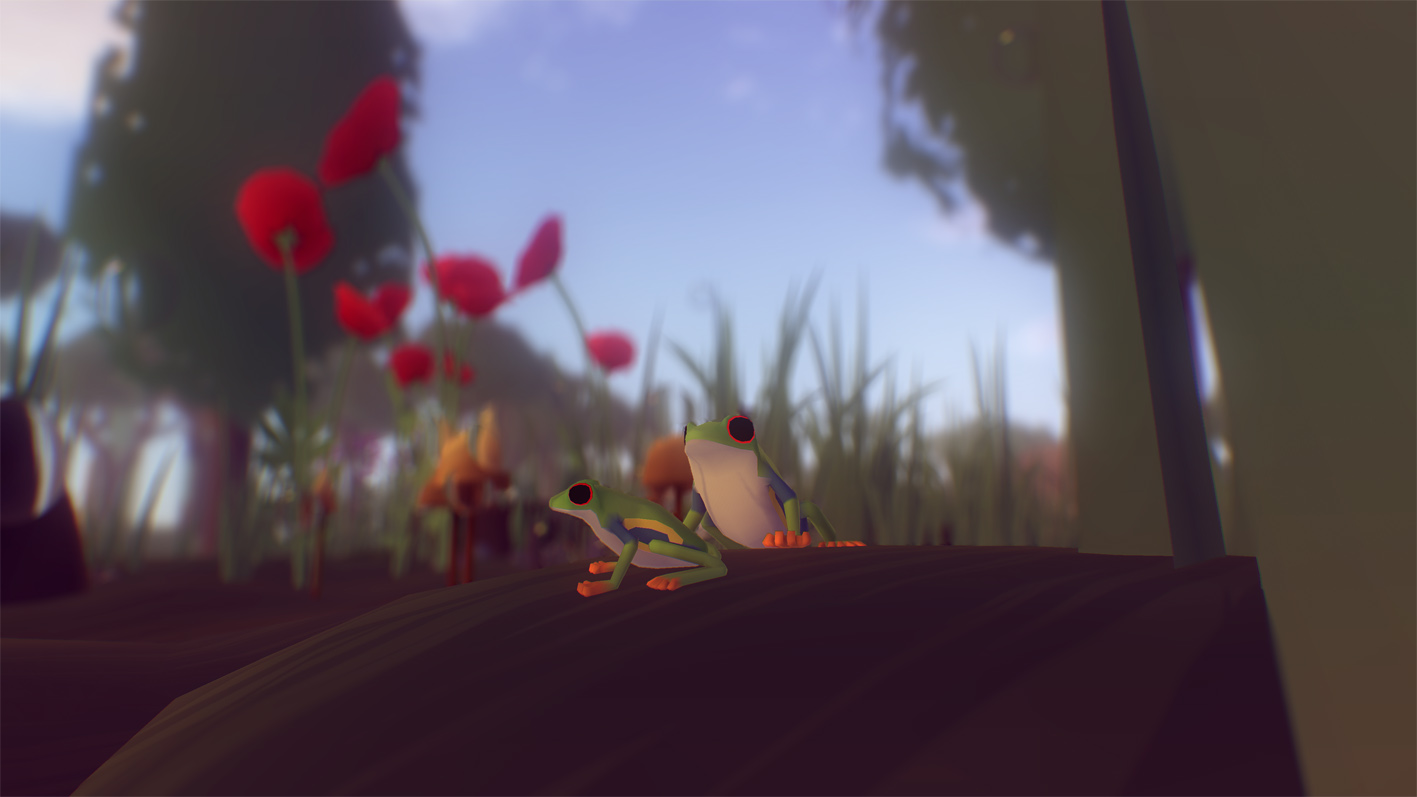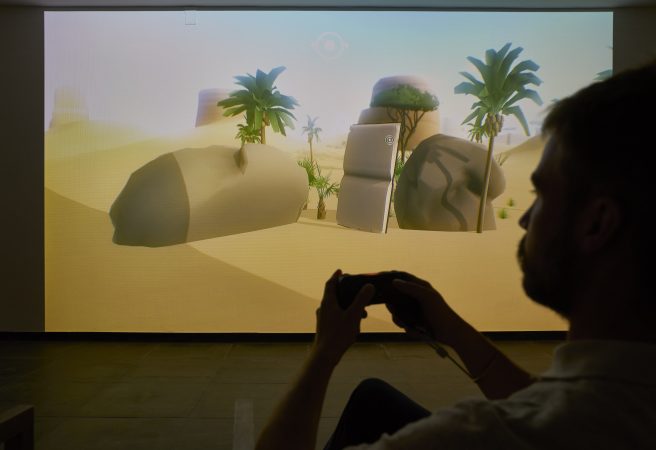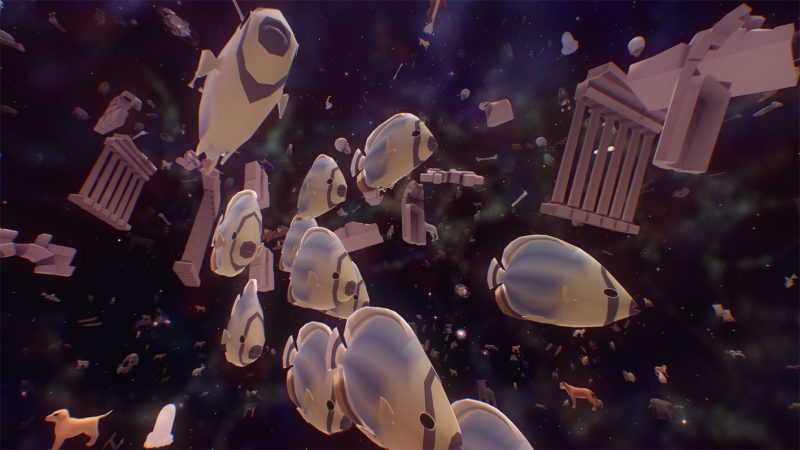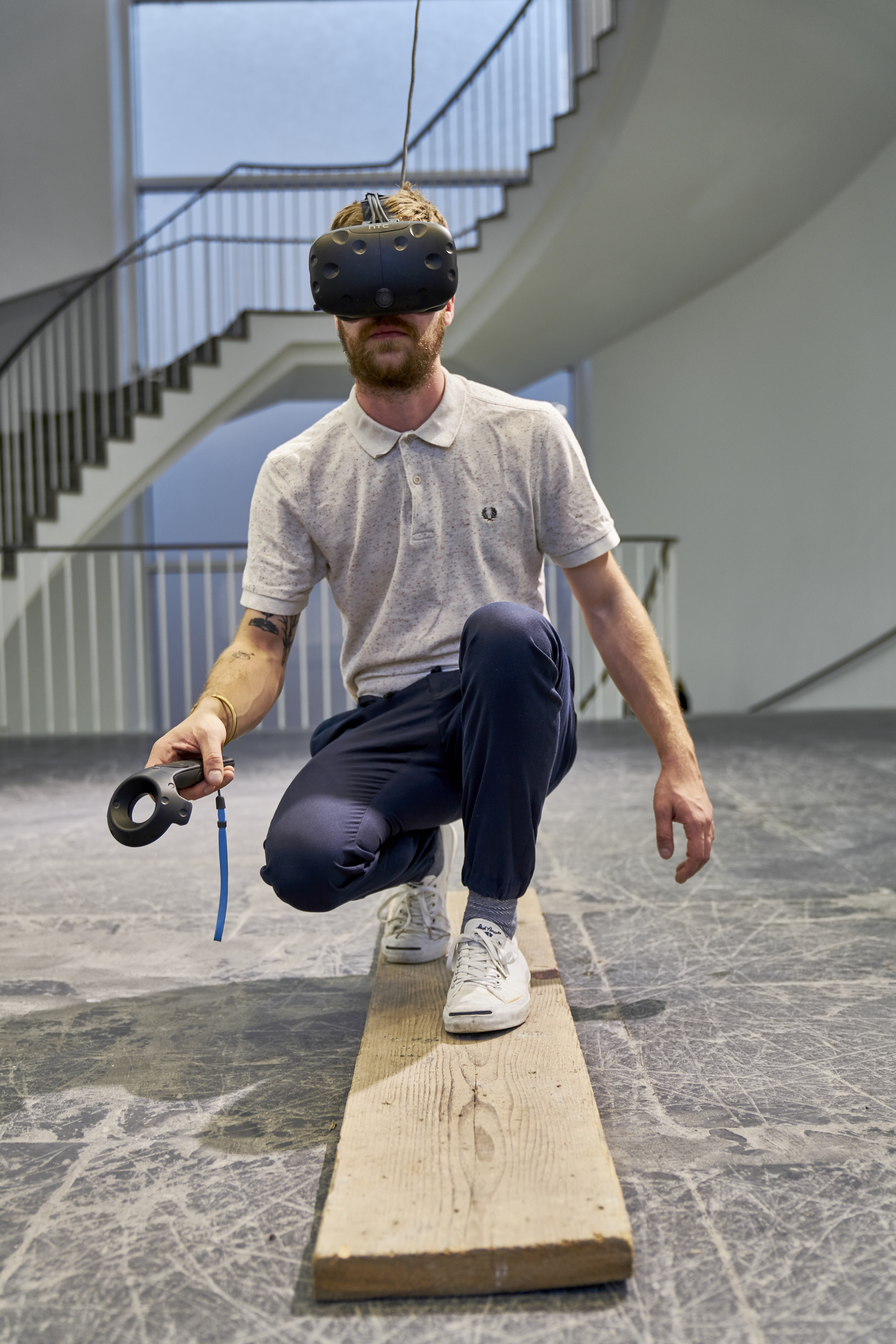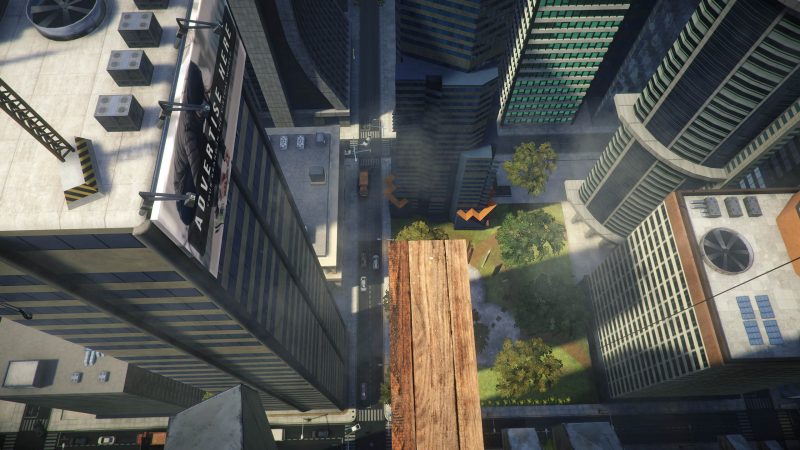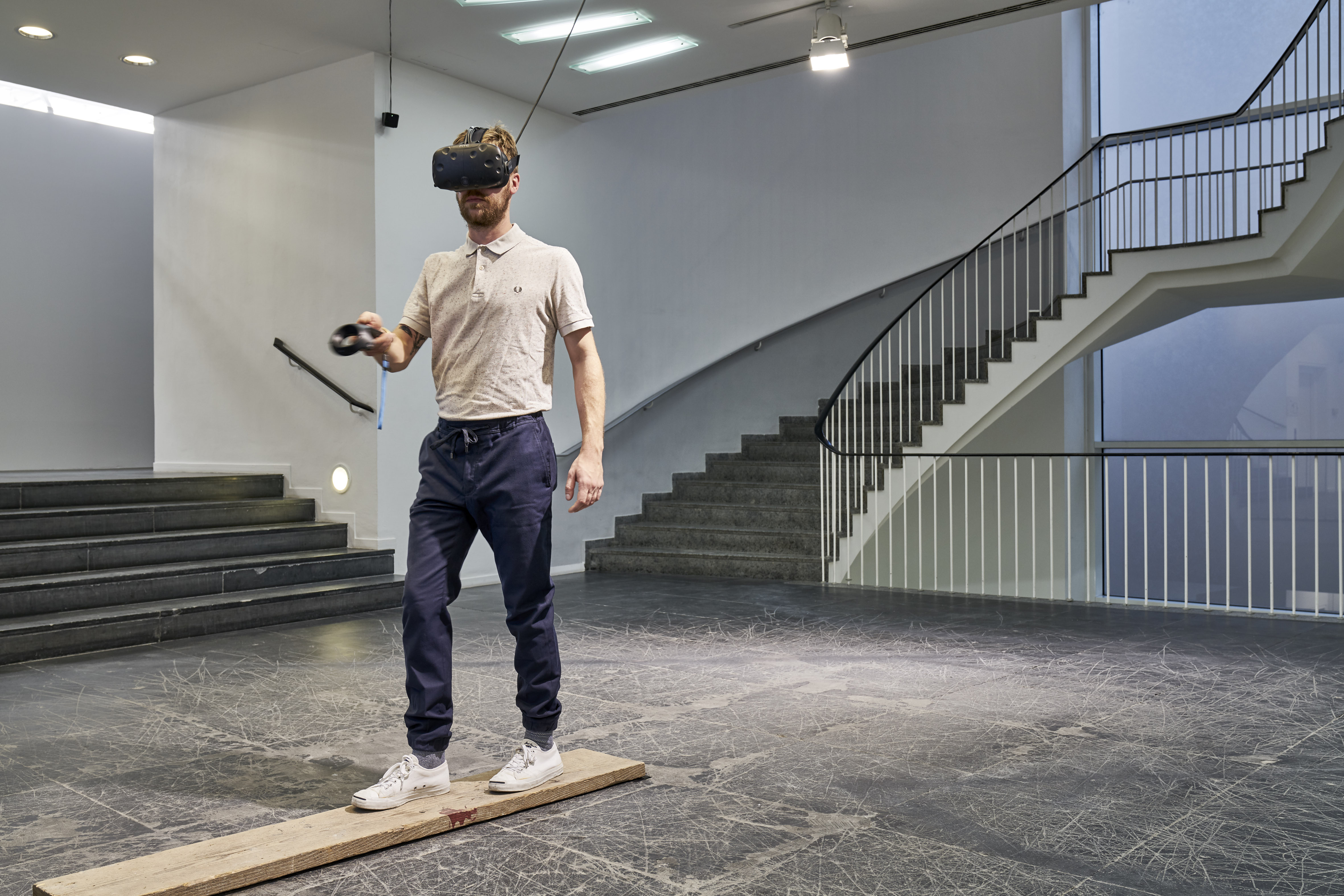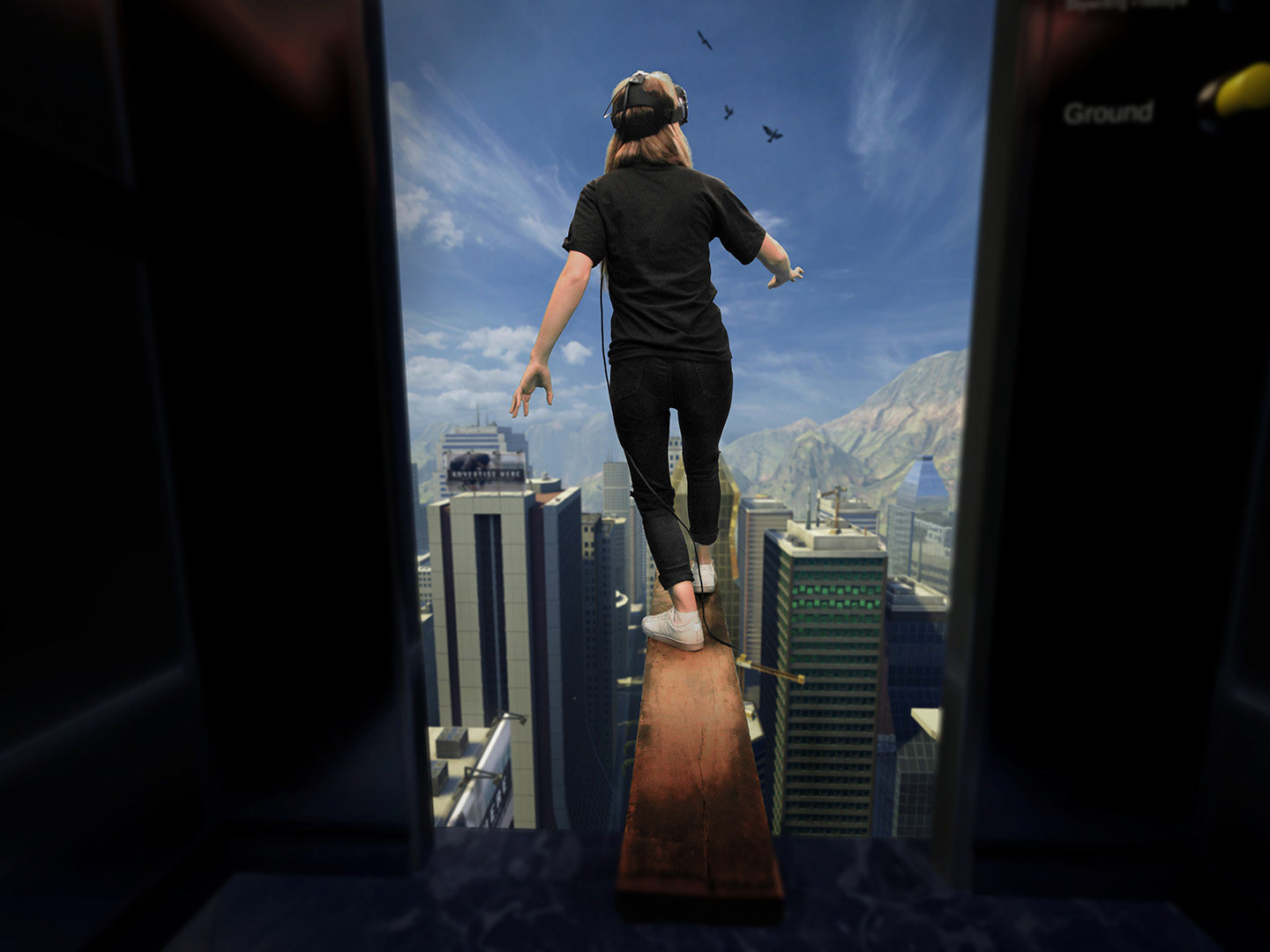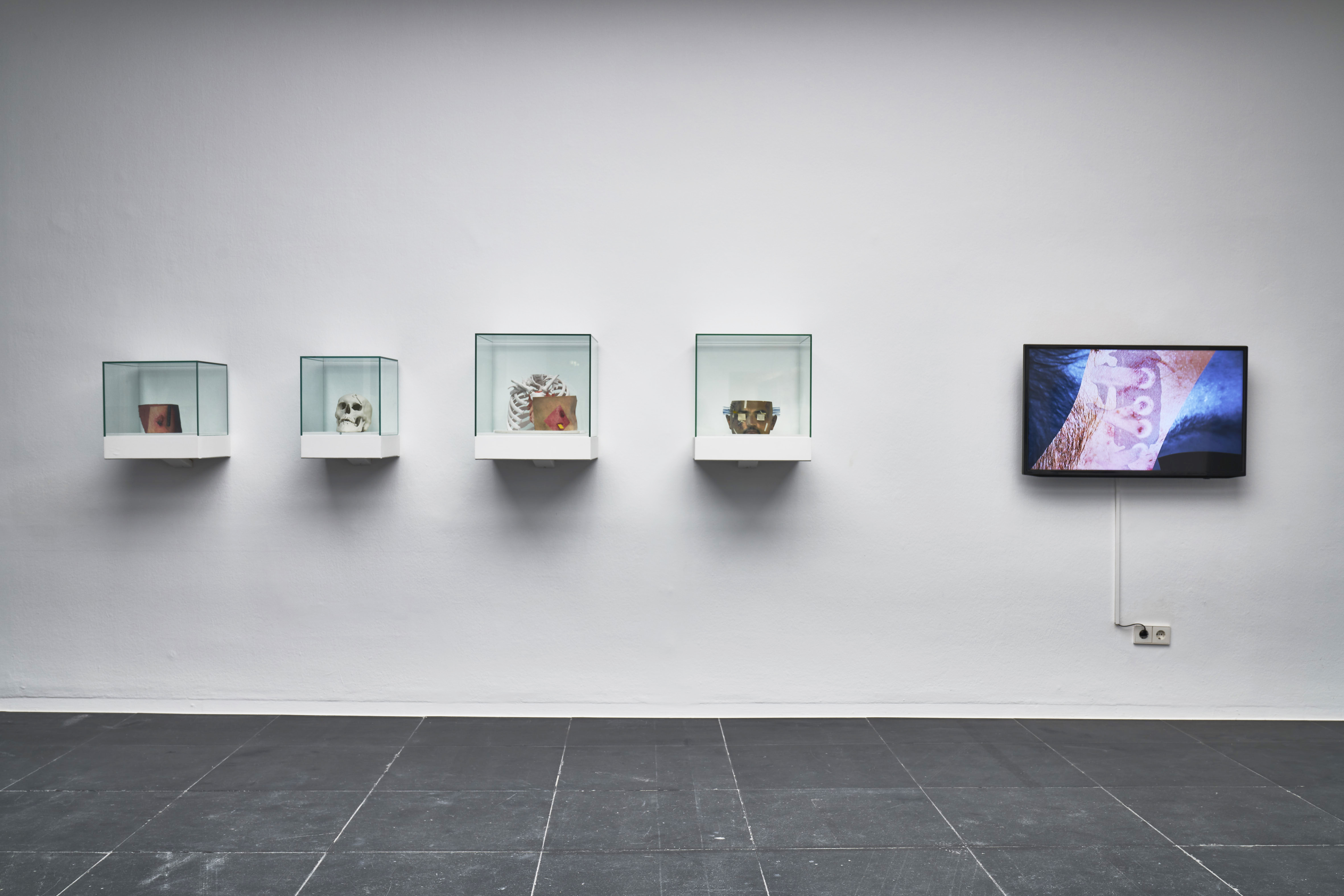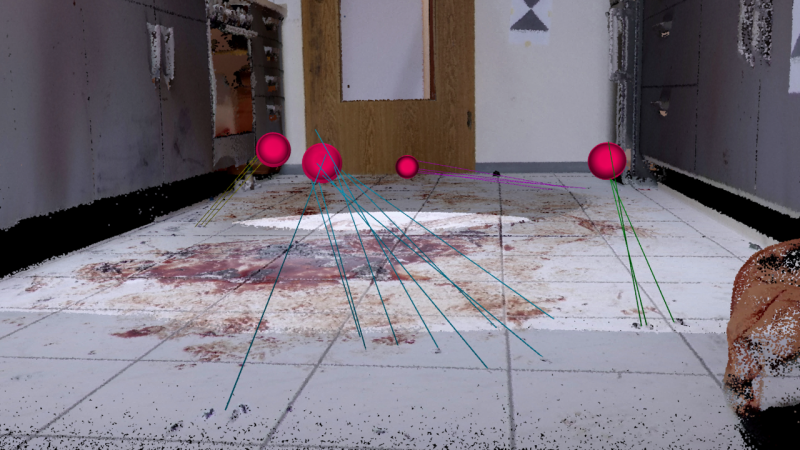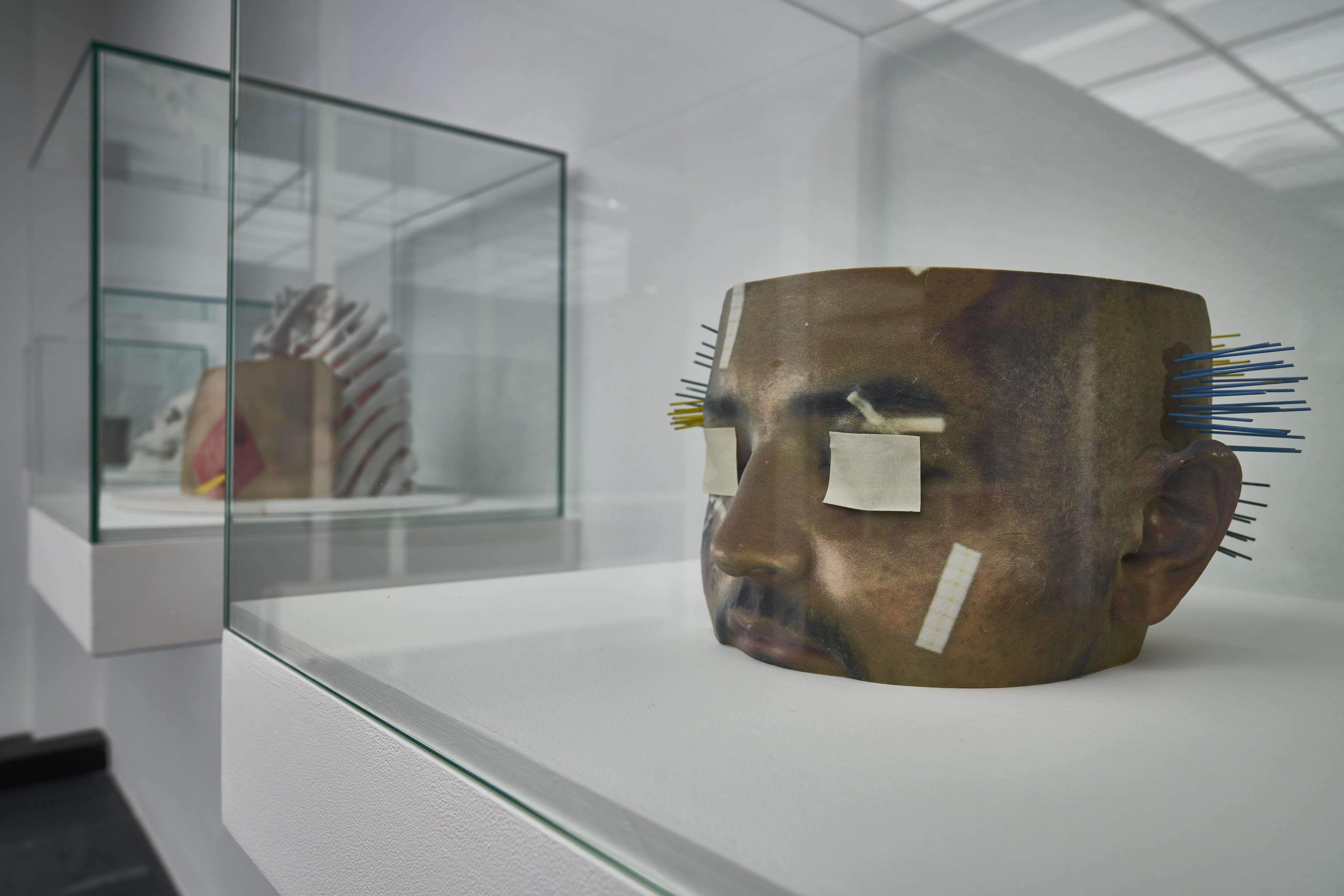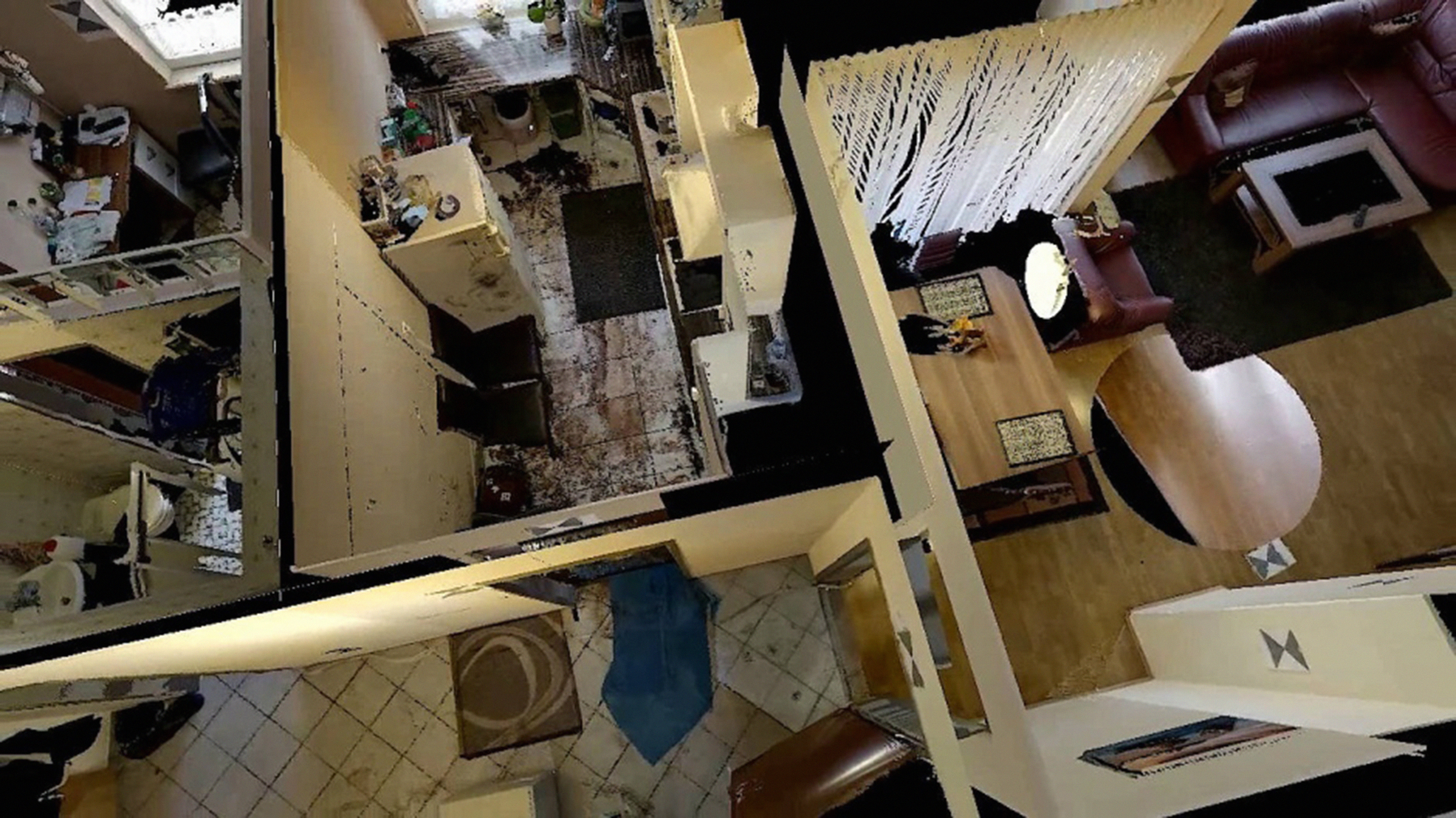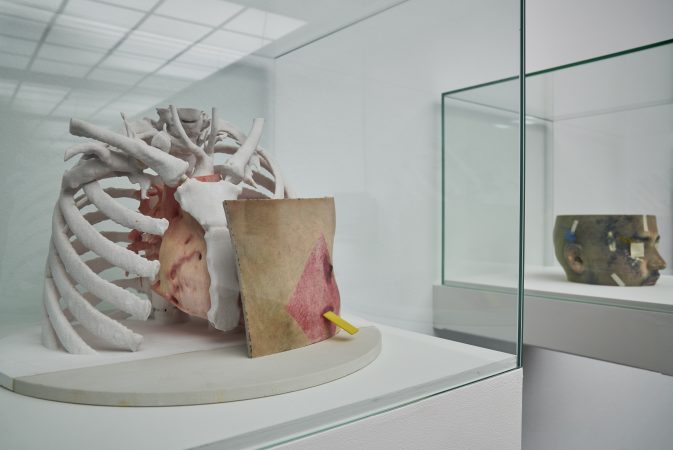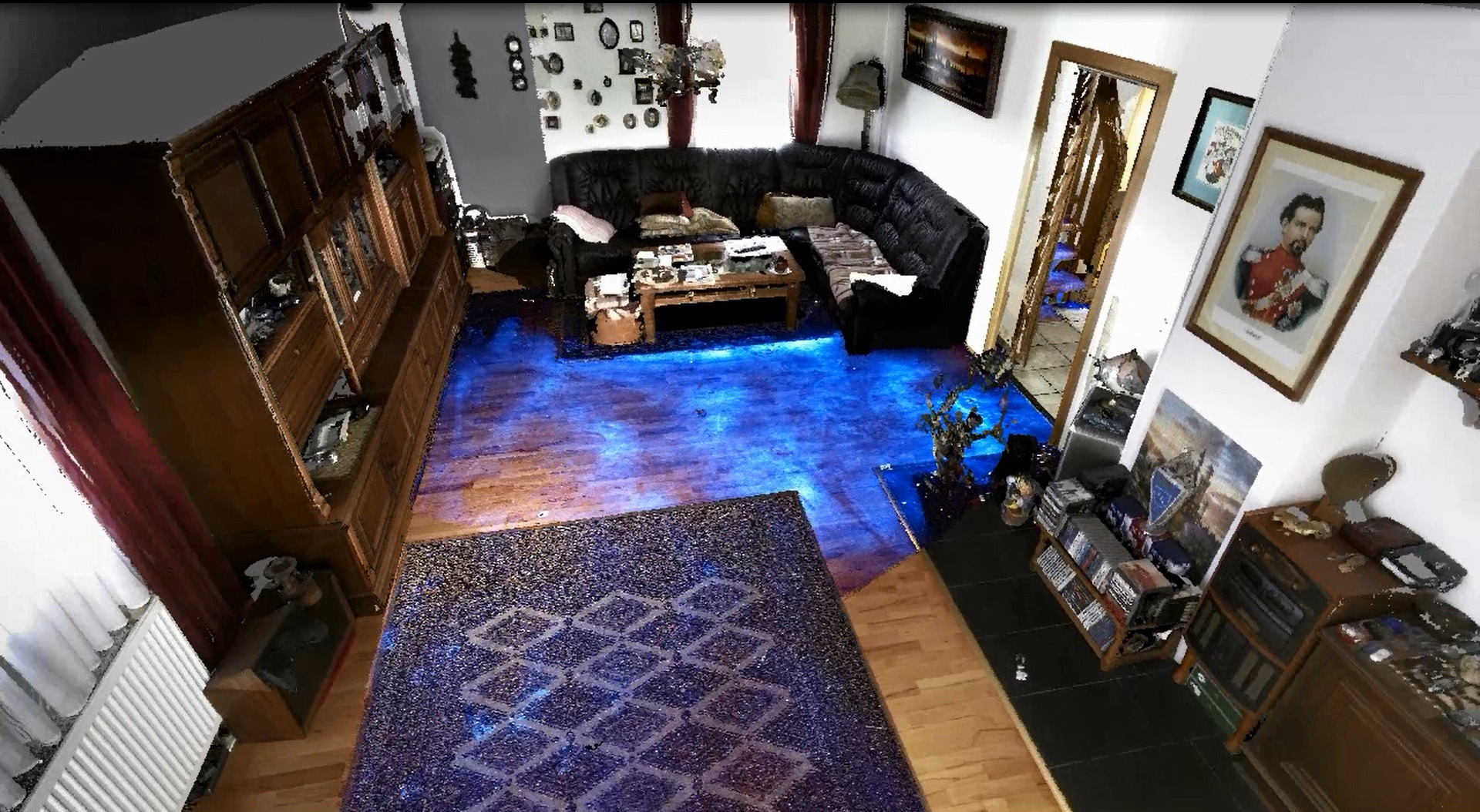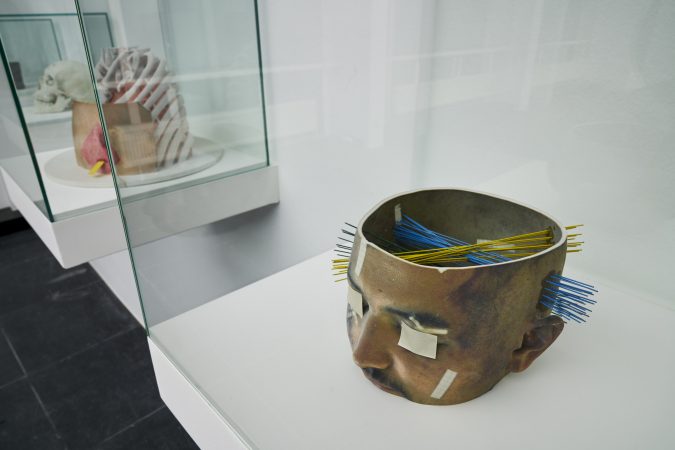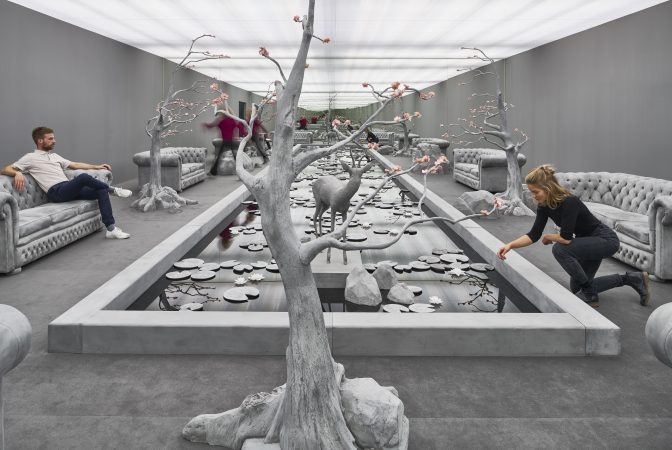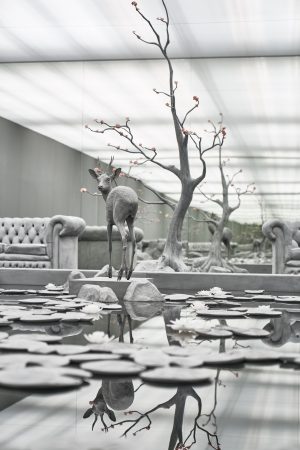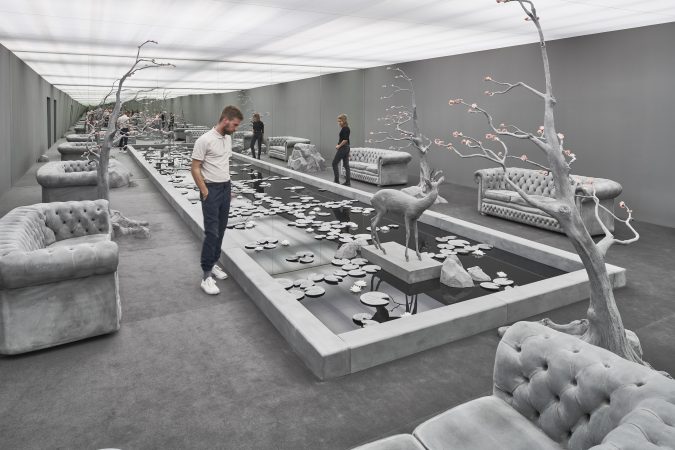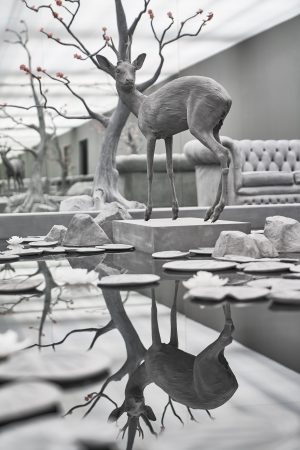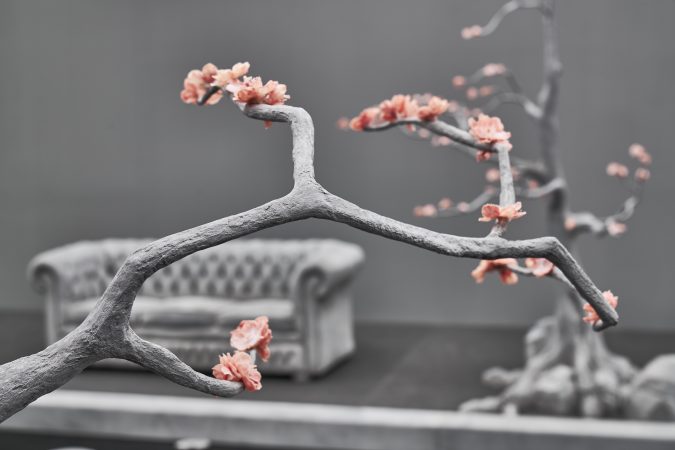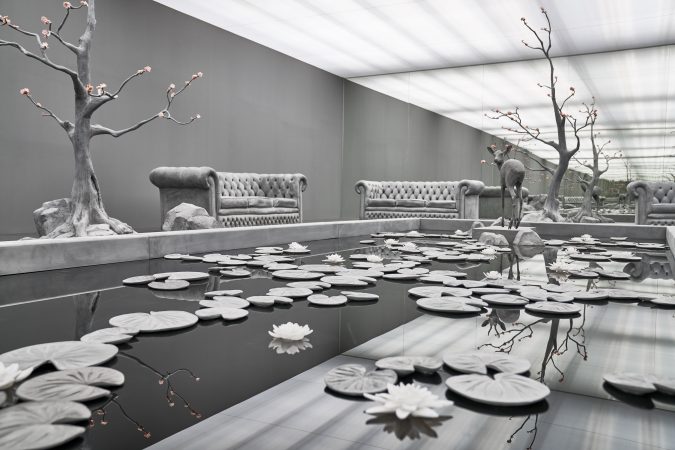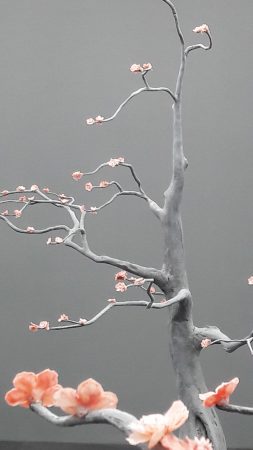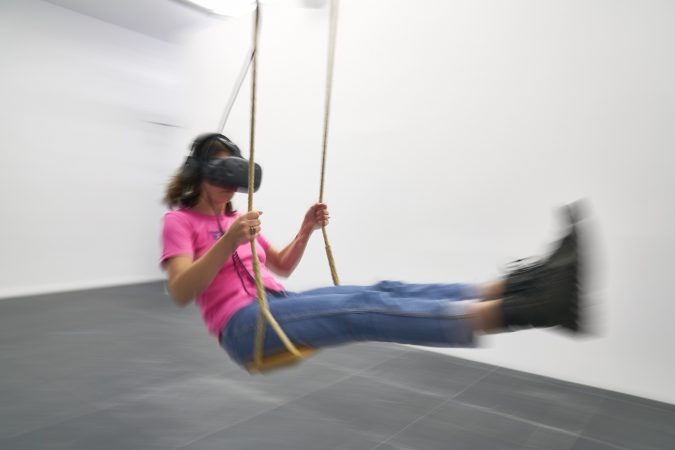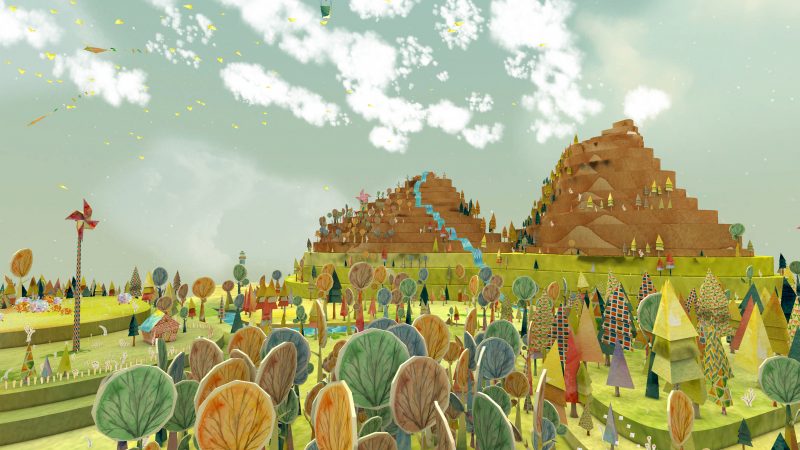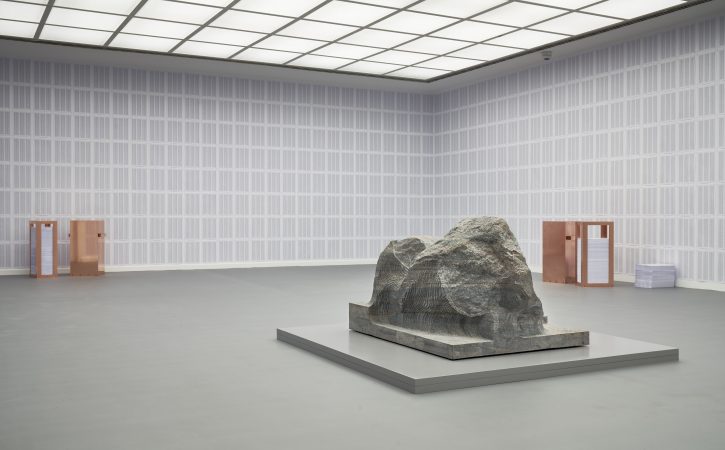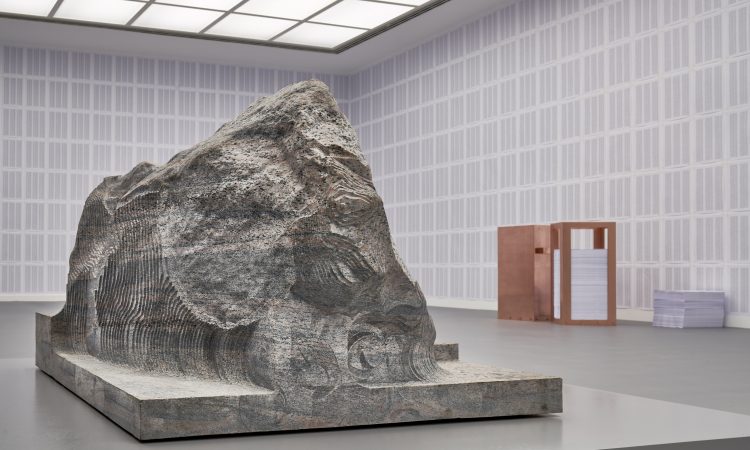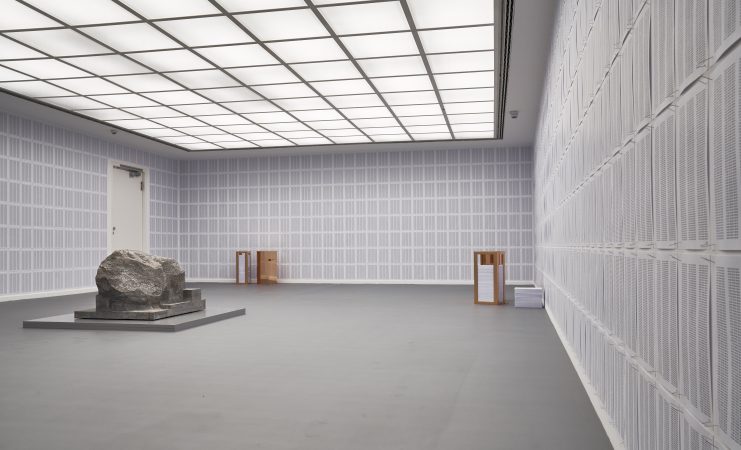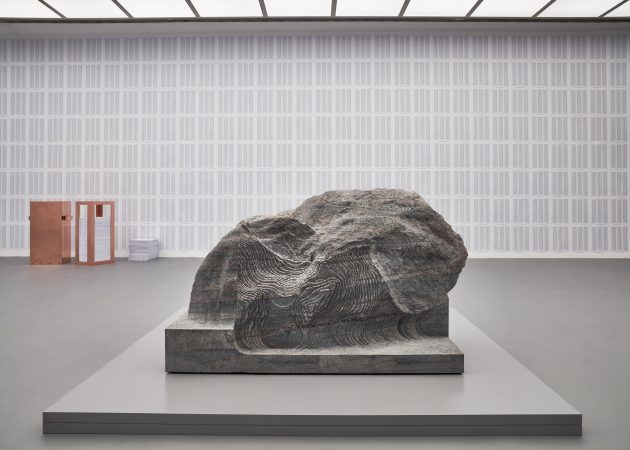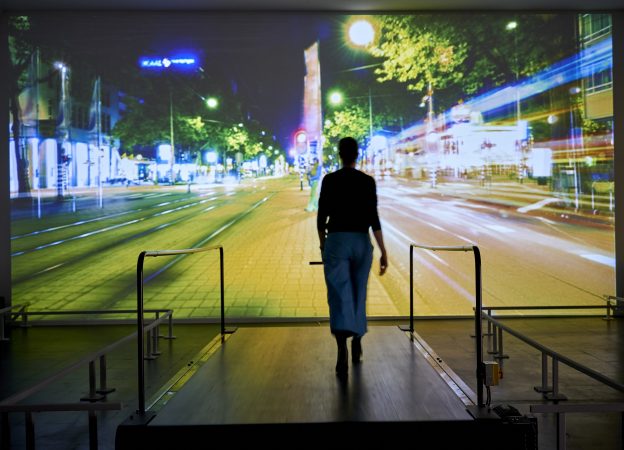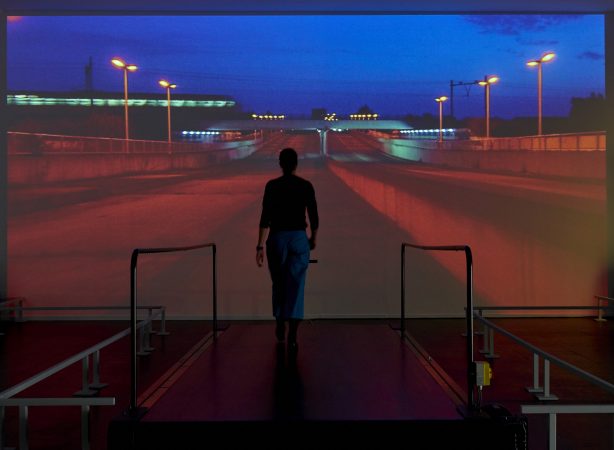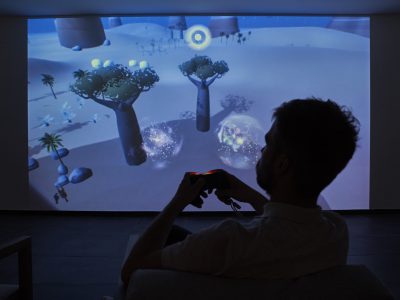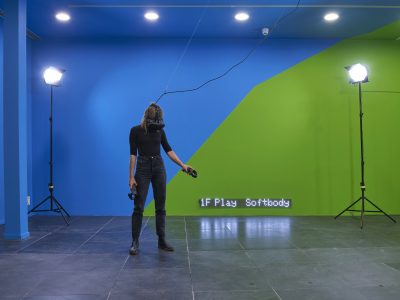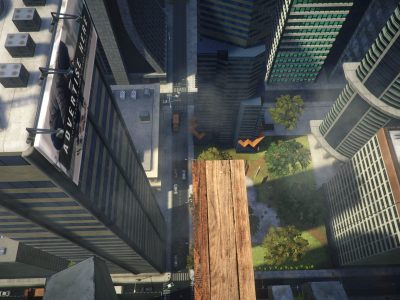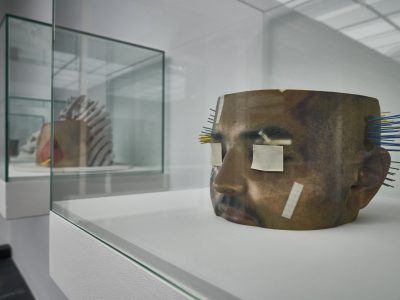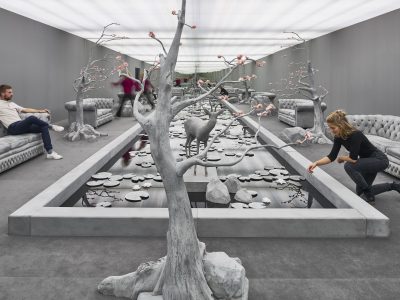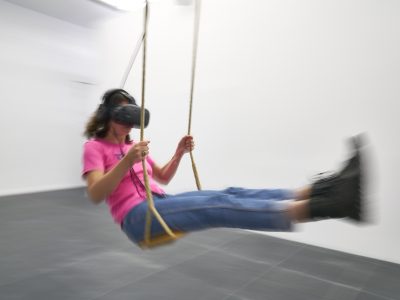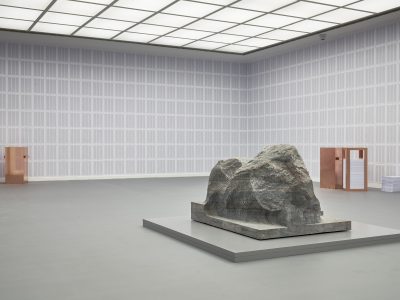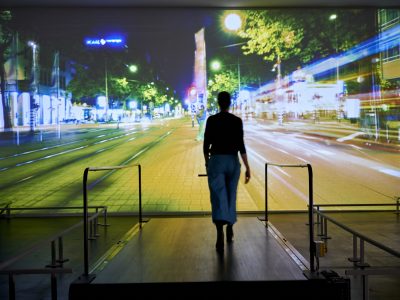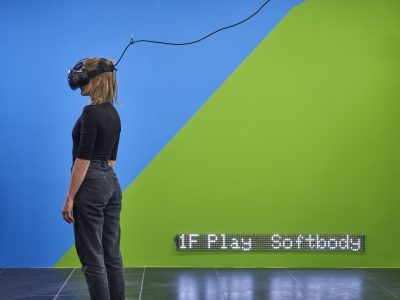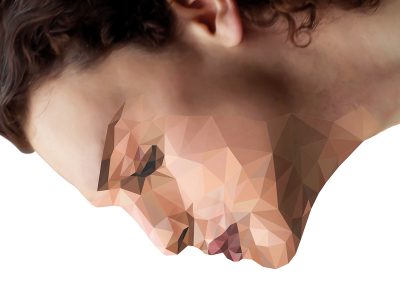Perception is Reality. On the Construction of Reality and Virtual Worlds
07.10.2017 — 07.01.2018
Participating artists: Thomas Demand, Alicja Kwade, Marnix de Nijs, Hans Op de Beeck, David OReilly, Manuel Roßner, Bayerisches Landeskriminalamt, Christin Marczinzik & Thi Binh Minh Nguyen, and Toast
Curated by: Franziska Nori
The Frankfurter Kunstverein presents the thematic group exhibition “Perception is Reality: On the Construction of Reality and Virtual Worlds.” The invited artists will examine the new conditions of human perception in relation to technically constructed realities. As one of the first exhibition houses in Germany, the Frankfurter Kunstverein will integrate a new forward-looking medium, virtual reality, into a contemporary art exhibition. The exhibition will present a range of analogue and digital works, virtual reality works from recent artistic production, conceptual photography, installations, technical forensics applications as well as innovative games. Through their spatial juxtaposition, a kind of thought experiment will emerge for the audience, raising questions about the intellectual, emotional, and aesthetic implications of artificial visual worlds.
“The exhibition poses questions about the basic conditions of perception today and how we construct our own conception of reality out of them. Technological systems are connecting people, data, and processes more and more closely together. Immersive technologies will increasingly replace analogue surroundings with virtual data rooms, therefore radically changing the way that we interact socially, work, and how we organize our free time,” according to Franziska Nori, director of the Kunstverein and curator of the exhibition.
A matter left mostly to the experts until recently, VR technologies carry the promise of immersing the user into an augmented reality, a digitally created environment, and integrating them into a 360° perspective illusion independently of space and time. They aim to create the most immediate perception possible, incorporating the user’s senses and emotions, who is isolated from the real world by means of headsets and headphones, so that the user can then move and act within this virtually created reality.
Which industries will further develop the potential of this virtual experience space, and with what intent? It is a question of the influence on the viewer. Who conceives of and designs the content of a virtual experience? Which emotional and intellectual reactions should be triggered? Even if actions within a virtual arena of spectacle remain without any real consequences – from criminal offenses to bodily limit experiences—they produce an intense experience in the human brain which is perceived as real and exist as a new category on the spectrum of human experience within an individual’s neural structure, which is subsequently stored as a long-term memory.
What challenges arise for our brain when technically produced virtual worlds increasingly play a role in our lives? How real are our pictures, how real are our experiences? Which perceptions does our brain use to construct an idea, or its own idea, of reality? Which parameters do pictures need to fulfill in order for people to accept them as real?
The juxtaposition of analogue contemporary art and Virtual Reality stations creates a choreography throughout the Frankfurter Kunstverein, which makes crucial observations on the relationship between perception, consciousness, and knowledge-based reason and asks which idea of the world we derive from these.
The invited artists and designers create analogue and virtual spaces in which the viewer has both physical and mental experiences. They experience the spaces with their senses and try to gauge the limits of expectation, illusion, and reality in these constructed visual worlds. The exhibition will open up a mental space for contemplating the complex relationship between the conditions of perception, the resultant constructs, and the idea of reality in the light of technological innovations through immersive VR technology.
An extensive programme of lectures by experts from various fields as well as public discussions and talks will accompany the exhibition.
PARTICIPATING ARTISTS
The exhibition is introduced by a piece from Manuel Roßner (b.1989). Roßner has digitally remodeled the architecture of the Frankfurter Kunstverein, replicated reality and added fictional elements. Viewed through VR glasses, the visitor enters a replica of the real space surrounding them and then proceeds to perceive and react to the changes of its fictitious twin. There is a huge sculptural form in the virtual space: a cube in an undefined state of matter, mercury-like in nature. It breaks through the ceiling and liquefies, and in doing so seizes and floods the entire realm of experience with an explosion. The user can define the location, timespan, and behavior of the fluid material using the controller. Roßner uses physics simulations, software, and scientific databases from the Internet as tools to influence the behavior of matter in space. He uses simulation tools and programs visual effects in which the matter be-haves according to physically exact parameters, but that the artist then freely com-bines and shapes. Roßner’s visual worlds do not follow a narrative. They are a pure experience of color, form, and material in space. In this controlled, artificial visual space, he redefines the materials’ characteristics, creates sculptures by combining physical parameters in novel ways and thus conceives scenarios of unexpected aesthetic simulation.
Located in the basement of the Frankfurter Kunstverein is the video game “Every-thing” by artist and game maker David OReilly (b.1985). This international award-winning work is an experience simulator of sorts that allows the user to adopt a range of perspectives within a minimalist world – be it that of a cell, animals, a light particle, a whole continent, or a galaxy in the universe. The work is based on the findings of the British philosopher Alan Watts, who calls into question the anthropocentric view – the human conception of being the center of earthly reality as opposed to being a part of nature. “Everything” is non-linear and can run endlessly. It doesn’t assign the user an objective, nor is there a mission to complete. It is a journey without an established course through a world without limits, one that is a far cry from the claims of realism and offers a poetic, philosophical, and holistic view of time and existence instead.
In an entirely analog work, Hans Op de Beeck (b.1969) creates an immersive experience and fictitious parallel world with his installation “The Garden Room.” For the exhibition, Op de Beeck has produced a space-within-a-space, a lifelike parallel world crafted in monochrome gray. Image and reflection are a central theme of the work. Figures stand in the room as if frozen in place: a water basin made of glass, divans to linger on. Mirrored walls convert the real space into constructed infinity. With everything else poised in sculptural rigidity, it is only the viewer who navigates this “hortus conclusus” as if through a condensed space of memory. The artist brings to life an artificial, immersive space, all without the use of VR technology. Op de Beeck’s sculptures and installations are accessible landscapes, artificial stages in a realistic style. The artist devitalizes both the image and the figure. He creates three-dimensional still lifes in a space whose motifs are both the absence of time and the way it stands still.
Installed in the proximity of Op de Beeck is the work “Swing” by Christin Marczinzic (b.1988) & Thi Binh Minh Nguyen (b.1987). The VR installation uses a swing as the control element. With the help of data glasses, the user experiences an artificial landscape far from the confining walls of the exhibition space. The faster the viewer swings, the higher the view extends over a world of images that makes no claim to realism, but rather uses a painted paper collage as its distinctive aesthetic feature. The VR piece focuses on body/mind separation: the sense of balance while swinging tethers the body within the space of the room, while at the same time visual perception is fully detached from its real surroundings, replacing them with visibly constructed imagery. By synchronizing movement and image, a plausible illusion is created despite the abstraction. The work consciously incorporates the motif of swinging, which has been used since antiquity to symbolize the desire to overcome the force of gravity as well as detachment from the real world, and deploys it as a metaphor to refer to the possibilities of virtual reality.
The virtual reality game “Plank Experience” by Toast takes the mind/body split to the extreme. Using VR glasses, exhibition visitors once again find themselves in a big city. They enter a virtual elevator whose door opens onto a skyline 160 meters up. This is where the parallelism begins. Within the virtual space, the user is challenged to balance above the depths on a wooden plank. In the real space, the visitor can feel a board under his feet and physically perceive wind from a fan. The viewer knows it’s an illusion, and yet in that moment the brain and body react with a fear of heights. The game application is also being used in therapy to overcome acrophobia. Accepting simulation as an experience in reality is a process that transpires in the brain with the aid of just a few factors. Reason is outwitted, reality replaced by illusion. Constructed experiences arise that trigger severe emotional and physical reactions in the viewer and, according to neuro-scientific studies, these establish themselves in the memory as being real.
The question concerning to what degree images are realistic is the central theme of Thomas Demand’s (b.1964) work. He presents his latest piece, “Patio”, in the Frankfurter Kunstverein. In Demand’s signature style, his photograph depicts a reconstructed reality on a one-to-one scale. The reference is neither a reflection of reality nor an extract of the real world, but rather a mass media image of a familiar public event reconstructed in the studio with paper and paperboard. Demand reconstructs the image of an event the way that media has implanted it into our consciousness. As a result, a tautological circle of thought emerges. The image makes a claim on reality for itself. “Patio” reproduces details from the backyard of the house that served as the hideout for one of the most wanted men in America: James “Whitey” Bulger, who was on the FBI’s most-wanted list for his involvement in 19 murders, blackmail, and bank robbery. The image shirks all expectations of spectacle and sensationalism, any display of violence and activity, so that ultimately there is room for imagination.
Nearby, visitors can experience applications from the department of “Zentrale Fototechnik und 3D-Tatortvermessung” (Central Photo Technology and 3D Crime Scene Mapping) of the Bayerisches Landeskriminalamt (Bavarian State Police) of Munich. Digital visualizations and representations of real crime scenes will be made accessible to the public in VR for the first time. They enable you to enter digitally recorded crime scenes and investigate them from every conceivable position – from close-ups to panorama views – no matter the time or place. The images are created by combining imaging techniques and methods, ultimately serving as a scientifically accurate means of measurement and traceability. The material must be able to stand up to legal demands. Additional applications are presented from the context of forensic medicine. The impact of physical violence on the body is digitally mapped, fixed in time and made accessible by VR glasses from both external and internal points of view, allowing the visitor to analyze evidence. The technological imagery is produced with the mandate to precisely depict reality. The effects of violence depicted here are real, not a fiction composed by the media. The visualization of data and information in compressed visual spaces has already begun to have long-lasting effects on the way we see things. The exhibition in the FKV offers first-time access to visual materials, which until now were only accessible to authorities.
Marnix De Nijs (b.1970), who has been among the pioneer media artists, is presenting the work “Run Motherfucker Run”. In this interactive installation, the user has to run on a treadmill in front of a projection. It is only through physical action that the user triggers different scenarios and decides which way they want to go. The projection shows a gloomy, urban Rotterdam, composed of a combination of film and 3D images. The feeling of being on the run is a main element of the experience and epitomizes the feeling of imminent danger. Should the user unexpectedly stop running, the treadmill will not, and will proceed to throw him to the ground. Via the technical transmission of their physical movements, the user becomes their own interface. In the spirit of media theorist Marshall McLuhan, Marnix De Nijs’ treadmill is an extension of the human body. Moreover, the installation aims to highlight the physical experience between worlds: digital and analog, mental and physical and even vision and movement. Who or what is the driving force, and can the relationship between cause and effect regarding man and machine still be clearly differentiated?
Alicia Kwade (b.1979) presents an installation conceived especially for the Frankfurter Kunstverein, which takes up the central themes of the exhibition and highlights them from a conceptual and sculptural perspective. The work revolves around the discussion of contemporary art’s engagement with matter and its digital transformation. The room installation is dominated by a partially finished granite sculpture. The natural stone was recorded using 3D scanning techniques and the digital data from the surface measurement was transmitted to a milling machine, which created an exact copy of the original. The artist stopped the process during the course of milling. This gives way to a sculpture that hangs in the balance between its natural and technological form. Hung on the walls, stacked on the floor and sealed in copper time capsules are 30,000 sheets of programming code: the technical surface measurements of the original stone which together ultimately form an image of it. Kwade takes herself out of the process, both as a creator, and in executing the form. Nature provides the model, the machine then scans, measures and reconstructs. Observation alone does not allow for clear interpretation and leaves the viewer in doubt as to what we think we see, what we perceive: is it reality that seems synthetic, or is the synthetic beginning to seem real?

